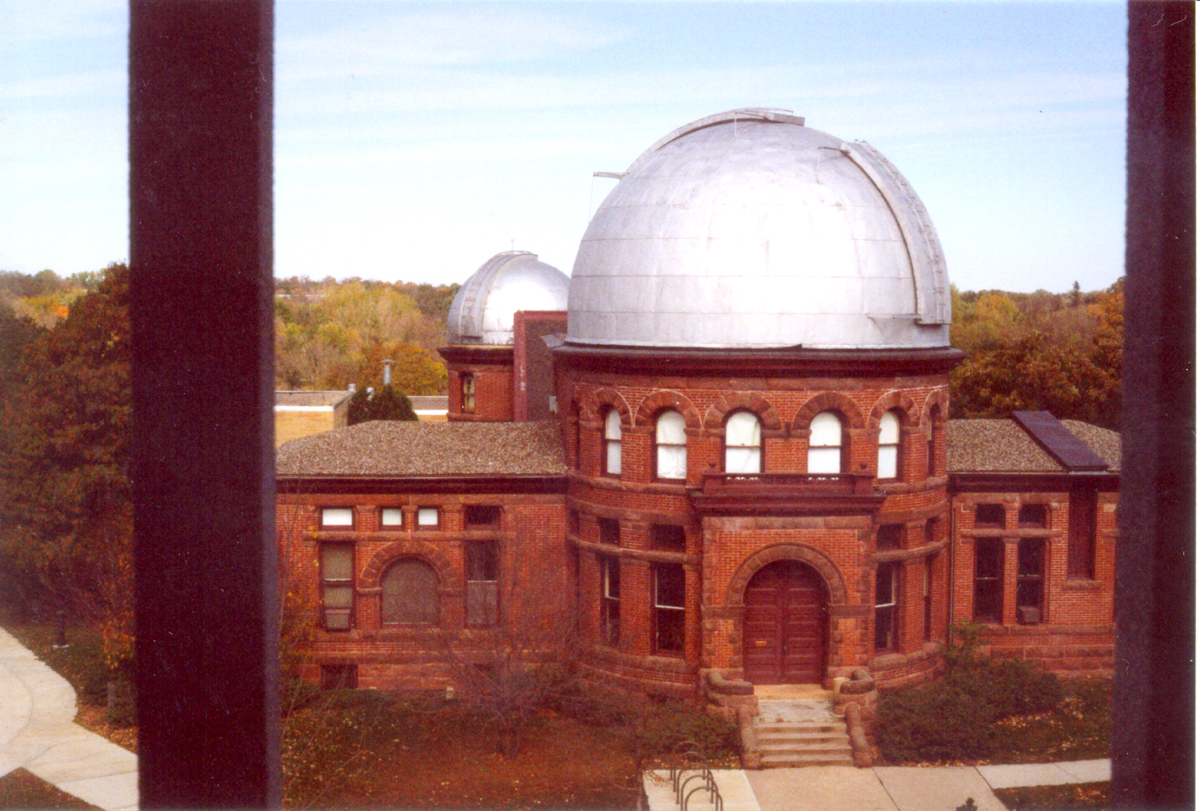
The Goodsell Observatory is located on the campus of Carleton College in Northfield Minnesota. This is a very historic observatory, first built in about 1890. For a time it housed the largest telescope in Minnesota. There are 2 main working telescopes in the observatory; an 8" Clark refractor and a 16" Brashear refractor. These are housed in domes on the top floor of the building. Downstairs on the ground floor is a transit telescope that was once used to set time in Minnesota. All of these telescopes date back to the 1890's. Downstairs in the foyer is a magnificent meteorite collection donated by one person as payment for his daughter's tuition.

The historic Goodsell Observatory as viewed from the Physics building. The large dome at the front houses the 16" telescope, while the smaller one at the back houses the 8". To the side is the old transit room. It was fascinating wandering around this building and imagining all the people who once worked here.

The 16" Brashear refractor. At f/16, this telescope is a monster! Seeing it for the first time was almost intimidating! No matter how often I used the telescope, I was never fully comfortable doing a pier flip. Moving the telescope past the zenith and looking up at the top of this massive cannon, I was always worried something would happen.

The 16" telescope.
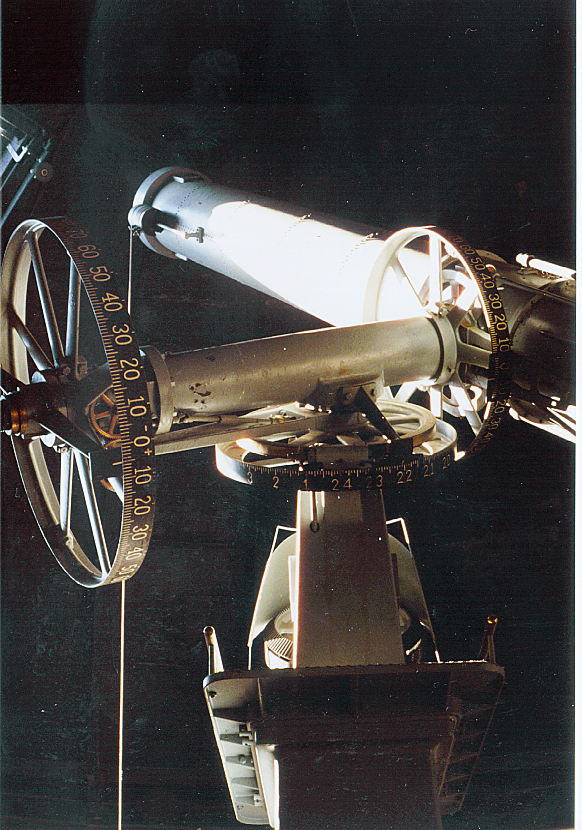
Accurate pointing is achieved using the huge setting circles.

The business end of the 16" telescope. One unfortunate thing about the 16" telescope is that the images were never quite as good as might be expected with such a large refractor. I was told while I was there that the telescope lens had been sent for cleaning several years before and that it had never worked as well since. Most likely the lens was not reassembled exactly the way it should have been after cleaning.

One of the best things about the 16" is the way that it have been kept as close to original condition as possible. Even still using the massive weight drive for tracking and the "ship's wheel" for RA movement! The drive system was extremely accurate and allowed me to image for several minutes without any trailing. The only downside was that after about 90 minutes you had to stop and crank the weight back up! :-(
The other disadvantage of the 16", was that at f/16 the field of view was very tiny, especially with the very small CCD chips that were available back in 2001. Still it was possible to get some nice images with the telescope. It would be interesting to see how well the system would work with the larger CCD chips that are available today.
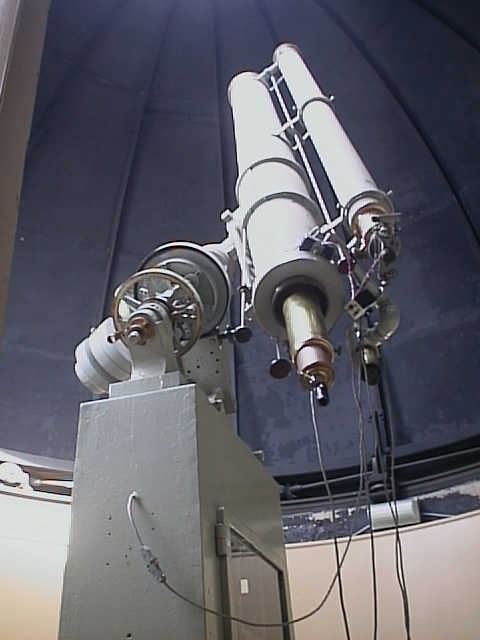
The 8" Clark refractor. Mounted on the side is a 3" guidescope. This was a very nice instrument for visual observing. The mount had been upgraded with an electronic drive, however there was no provision for autoguiding. Also, the telescope is not perfectly aligned on the pole. This limits its usefulness for CCD imaging.
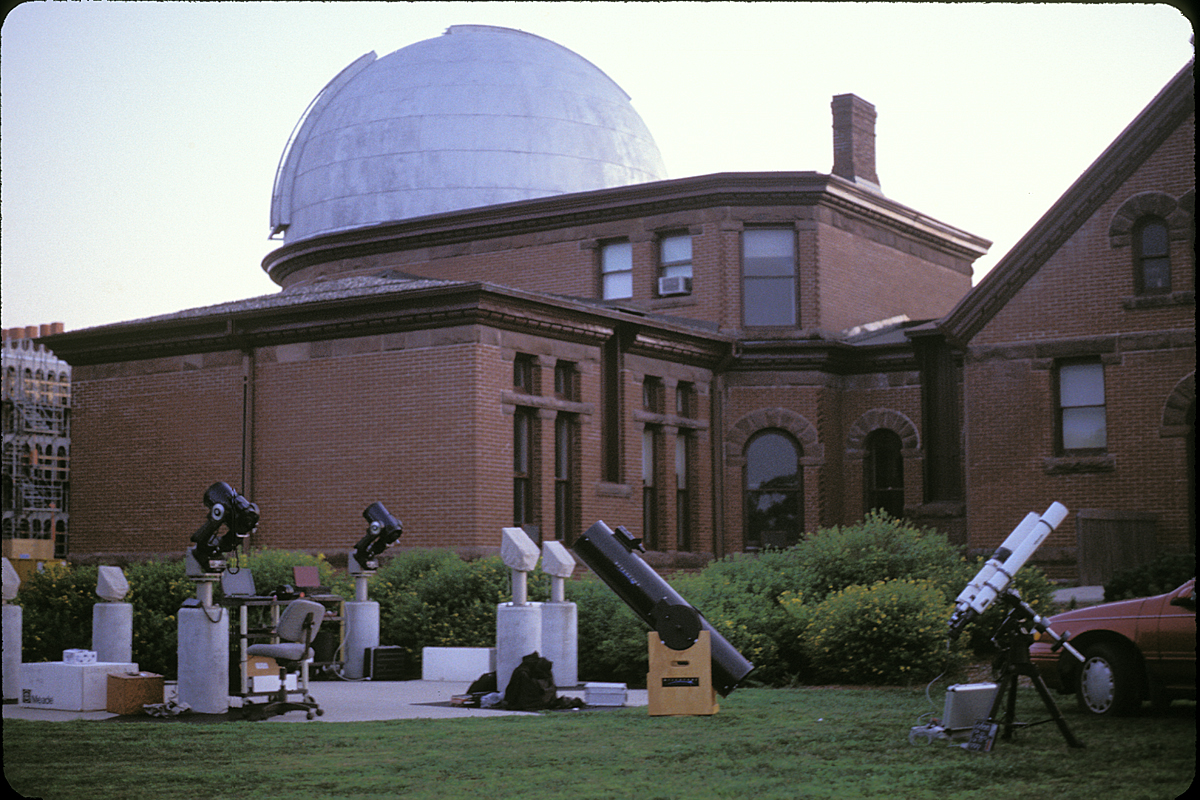
For student use, there are 6, 8" Meade telescopes that can be mounted outside on piers. Mac computers are wheeled out on carts for controlling the telescopes and also the CCD's that can be attached. Also visible in the photo are my 10" dobsonain and 5" refractor.
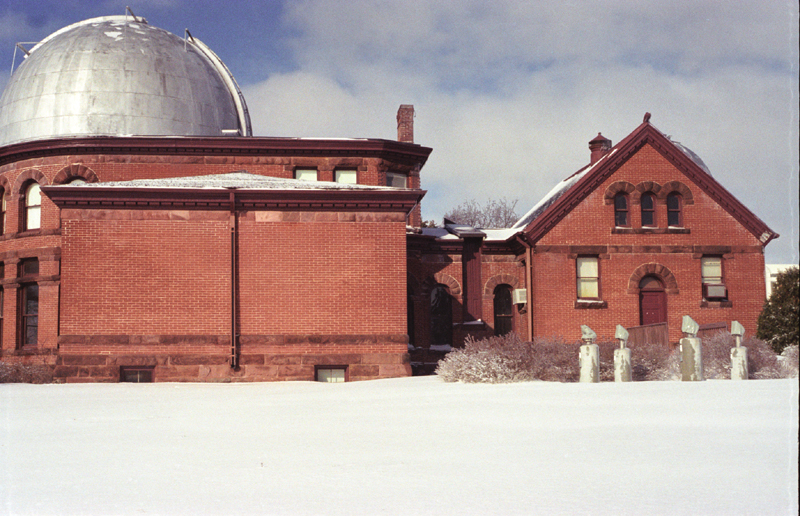
Although the observatory is today surounded by buildings and lights, light pollution is not as bad as it could be. It is possible to turn off the lights in the vacinity and most people are willing to keep the room blinds closed if they are in their offices when the observatory is being used. The biggest downside of the observatory is that it is in Minnesota! More than a little cold for this West Auzzie!!!! Observing at -35C and knee-deep in snow is interesting!